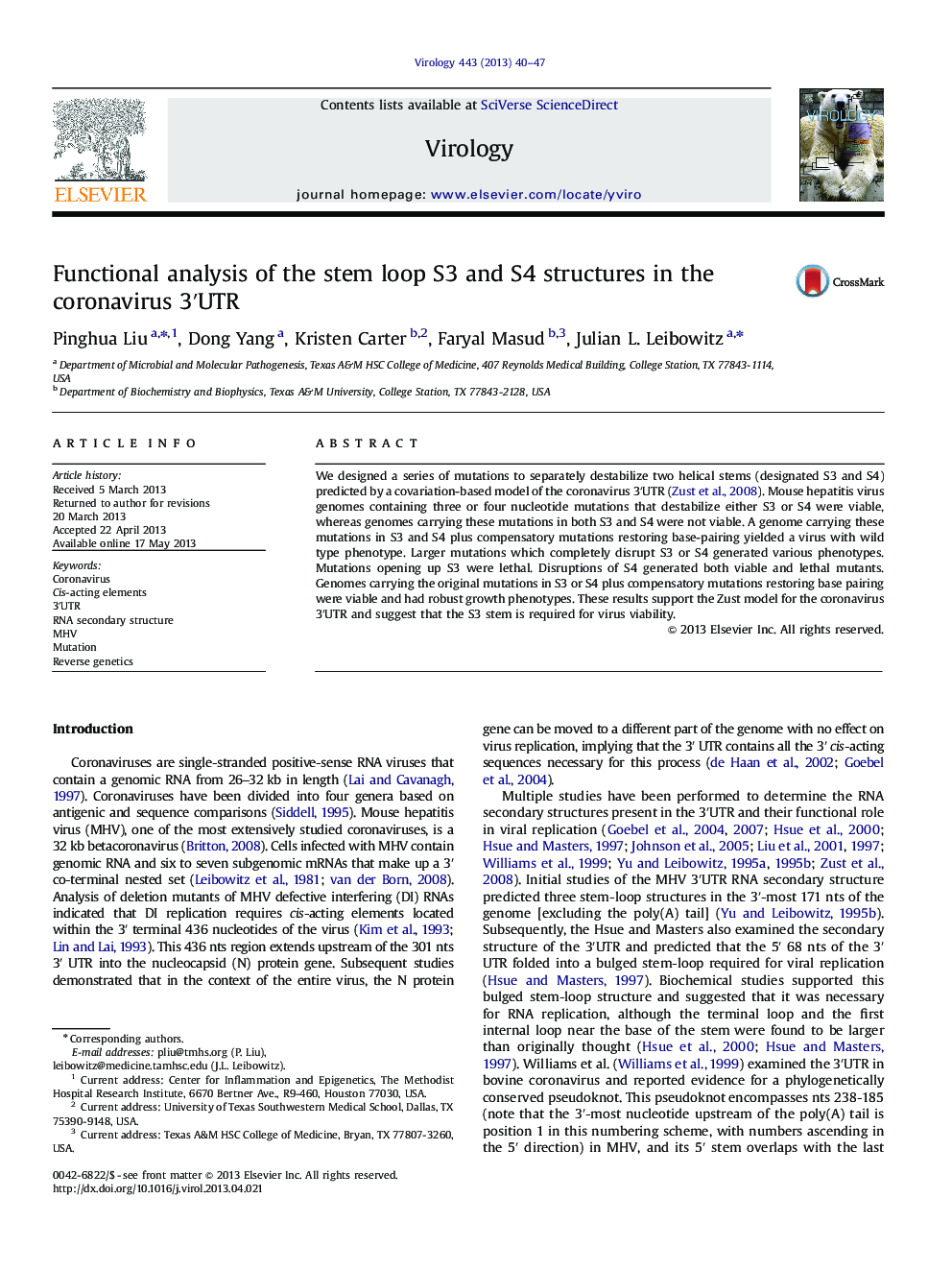| Article ID | Journal | Published Year | Pages | File Type |
|---|---|---|---|---|
| 6140980 | Virology | 2013 | 8 Pages |
Abstract
We designed a series of mutations to separately destabilize two helical stems (designated S3 and S4) predicted by a covariation-based model of the coronavirus 3â²UTR (Zust et al., 2008). Mouse hepatitis virus genomes containing three or four nucleotide mutations that destabilize either S3 or S4 were viable, whereas genomes carrying these mutations in both S3 and S4 were not viable. A genome carrying these mutations in S3 and S4 plus compensatory mutations restoring base-pairing yielded a virus with wild type phenotype. Larger mutations which completely disrupt S3 or S4 generated various phenotypes. Mutations opening up S3 were lethal. Disruptions of S4 generated both viable and lethal mutants. Genomes carrying the original mutations in S3 or S4 plus compensatory mutations restoring base pairing were viable and had robust growth phenotypes. These results support the Zust model for the coronavirus 3â²UTR and suggest that the S3 stem is required for virus viability.
Related Topics
Life Sciences
Immunology and Microbiology
Virology
Authors
Pinghua Liu, Dong Yang, Kristen Carter, Faryal Masud, Julian L. Leibowitz,
